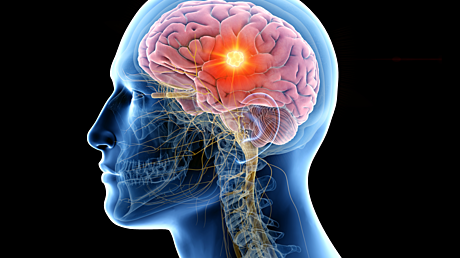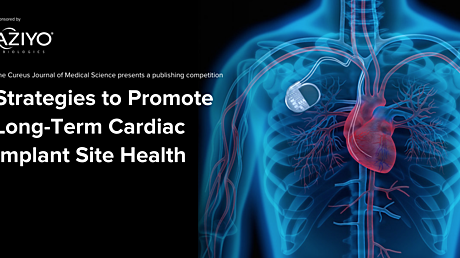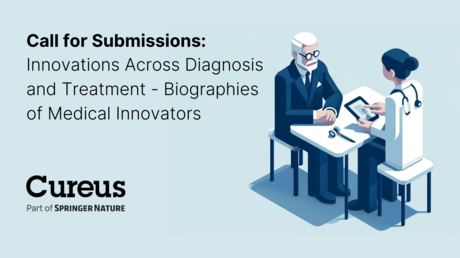Newsroom
Understanding Cureus: An Introduction to the Journal
The Cureus Journal of Medical Science was started in 2009 in the basement of a building on Stanford’s School of Medicine campus. Originally named PeerEmed, Cureus is the brainchild of two accomplished academics who had grown disillusioned with what they perceived to be an overly political and opaque medical publishing process. With a goal of eliminating barriers to the publication and dissemination of medical science, Dr. John Adler, a neurosurgeon at Stanford, and Dr. Alexander Muacevic, a neurosurgeon at the University of Munich, Germany, joined forces to create a new way to publish peer-reviewed medical science. With a focus on equity, efficiency and transparency, Cureus was born. Cureus has long aimed to level the playing field by providing clinicians and researchers with equal opportunity and access to legitimate, peer-reviewed research regardless of their perceived status (country, institutional affiliation, and so on). Initially featuring a revenue model focused on online advertising, Cureus later introduced fees for some authors in the form of an editing fee for articles submitted in poor condition. With this change, the journal moved away from an advertising-dependent model while still offering free publication to roughly one-third of all authors. Authors are provided an opportunity to publish original studies, case reports, technical reports and editorials for free and if their articles fall short of this standard, the required editing fees vary according to the amount of editorial work needed and average $370 an article–still an order of magnitude less than typical article processing charges (APCs). Our editing fee is required for review articles as the editing work is more involved and exceeds that of other article types. The ability to provide authors an opportunity for free publication remains paramount as it is consistent with our emphasis on equity and access for authors around the world. The bedrock of this philosophy is our approach to publication standards. While the vast majority of academic journals only publish articles they deem novel or impactful, Cureus takes a different approach. Credible and legitimate science is the standard for publication, assessed by objective, specialist peer reviewers and editors, thereby removing the subjectivity (and, we would argue, inherent unfairness) of anonymous editors determining the so-called importance of articles. This innovative approach has spurred Cureus to incredible heights with some of the fastest growth in the entire academic publishing industry, from a modest total of 86 articles published in 2014 to over 19,000 articles in 2023. By offering equitable, fair and no or low-cost publishing, Cureus has amassed a large audience of devoted authors and, in turn, an equally large pool of ready and willing peer reviewers. All articles require at least two completed peer reviews from reviewers vetted and invited by the journal. Peer reviewers suggested by the authors or invited by channel admins or editors will assist in strengthening the article by providing valuable additional feedback, but these reviews do not count towards the minimum requirement to satisfy peer review. In a unique twist on traditional peer review deadlines, reviewers are pitted against one another in a race to review articles as we’ve found that deadlines just create artificial delays. And lest you think we will accept any peer review regardless of content, all peer reviews are reviewed themselves, and those lacking in critical feedback and thoroughness are summarily rejected. The result is a median turnaround time of just 26 days from submission to publication. Cureus was created to disrupt the medical publishing industry, and judging by the journal’s incredible growth, it’s fair to say we are doing just that. With multiple revenue streams including editing fees, online advertising, sponsored publishing competitions and academic channel subscriptions, Cureus doesn’t rely on often unaffordable APCs, thereby ensuring that all authors, regardless of socioeconomic status, have the opportunity to publish. Academic channels deserve special mention as the journal’s portfolio of channels has grown to include over 80 university and hospital departments, medical schools, and medical societies. Broadly speaking, channels are a branded section of the journal devoted to publishing, highlighting and promoting the scholarly output of channel organizations and their members. Channel administrators (“Channel Admins”) and editors (“Deputy Editors”) take an active role in attracting and reviewing initial submissions and ensuring that journal guidelines are met and post-review revisions are made. Cureus journal editors will still review all submissions and requests for publication, appoint peer-reviewers, determine if authors have applied necessary changes, and remain the final authority on whether to publish or reject each and every channel article. It’s important to note that channels are not independent journals and the ultimate decision on whether to publish these articles resides not with the channel, but with the journal’s editors, who are empowered to act independently. We’d also like to highlight a relatively new addition to the journal, Cureus Collections. Collections feature guest editors vetted and approved by the journal. These guest editors determine whether articles already approved by Cureus journal editors are a good fit for inclusion in their collection. Approved articles will appear within the collection, while articles rejected by the Collection guest editors will still be published, just not in the designated collection. In accordance with our focus on equitable publishing, all articles submitted to Cureus, whether via a channel, competition, collection or none of the above, are subject to the same acceptance and publication criteria and standards. Speed of consideration, peer review and final editorial review and copy editing does not change due to the type of submission. As 2024 draws to a close, Cureus will continue to challenge the established norms of academic publishing by focusing on equitable and efficient publication of credible and legitimate research and access for all, no matter their status. The journal’s growth is a testament to the need for this approach and we do not take it for granted. On behalf of the editors and staff of the Cureus Journal of Medical Science, we thank you for entrusting us with publishing your scholarly and clinical work.
Oct 31, 2024
Call for Submissions The Real Impact of Wearable Health Tech: Advancing Medicine or Overpromising?
Scope Is the rise of medical wearable technology a true revolution in healthcare, or is it simply a tech trend with more promise than proof? Cureus is excited to announce a call for submissions for research articles and reviews exploring the real-world impact of wearable devices on patient care. From enhancing chronic disease management to raising ethical questions about data privacy, we invite you to contribute to a growing body of literature that critically examines whether wearables are reshaping healthcare or just adding more noise. Submission Details & Guidelines: Please review our detailed author guidelines to ensure your submission meets all requirements. Visit our submissions page to submit your manuscript. Use the keyword “wearable technology” in your submission to indicate your participation in this call. Submission Deadline: November 8th, 2024 Cureus will accept original articles, review articles, case reports, and technical reports. We will NOT accept editorials for this call for articles. Let’s dive into the debate: Are wearable health technologies truly revolutionizing patient care, chronic disease management, and preventive care, or are they just another overhyped promise failing to deliver on their potential?
Oct 23, 2024
Opioid Epidemic Articles
We’d like to thank all of the authors who participated in our “Combating the Opioid Epidemic” call for submissions that kicked off in July. Click the link below to view the articles we've published so far and stay on the lookout for new calls for article submissions on major clinical topics!
Sep 05, 2024
Brain Awareness Article Submissions
Authors submitted research regarding Alzheimer’s and other neurodegenerative diseases such as dementia, Parkinson’s and Huntington’s, as well as neurological and neuropsychological disorders. We'd like to thank all of the authors who participated in this call for articles. Stay on the lookout for new calls for article submissions on major clinical topics.
Sep 05, 2024
Peptide Therapy
There are many potential benefits of peptide therapy in different medical fields. This Cureus article explores the expression of antimicrobial peptides and cytokines in the human omentum following abdominal surgery, with the aim of understanding how these peptides can aid in the prevention of postoperative infections. The article below focuses on the effects of Mechano-Growth Factor (MGF) peptide, which has been shown to have favorable impacts on muscle growth, wound healing, cartilage repair, and brain development in animal studies. MGF peptide has also been shown to activate muscle stem cells and enhance heart health, among other benefits. There is a growing interest in peptide therapy as a potential solution to various medical problems, from muscle loss to postoperative infections. Sponsored Content Peptide Research: an Overview Mechano-Growth Factor (MGF) peptide is a splice variant of insulin-like growth factor [i] that has been suggested to have cardiological effects, favorably influencing muscle growth, wound healing, cartilage repair, and brain development in animal studies. MGF C-terminal has been speculated to enhance muscle healing after damage and hasten recovery. Moreover, data is suggesting it may help shield tissues from the mechanical stressors incurred during training and physical activity. Do you have a Ph.D. or MD and need to purchase MGF peptides for your research? You can find high-quality, affordable peptides online. What is the Mechano Growth Factor? In contrast to IGF1, the peptide known as Mechano growth factor (MGF) [ii] has a slightly modified sequence. Research suggests it may significantly impact growth and development. Animal studies purport that MGF peptide may promote tissue repair and development by activating muscle stem cells and increasing protein synthesis for tissue growth. Researchers are now exploring this peptide as a potential adjuvant for disorders that cause muscle loss and wasting in animals. Animal studies support that MGF peptide may promote tissue repair and development by activating muscle stem cells and increasing protein synthesis for tissue growth. Researchers are now exploring this peptide as a potential therapy for disorders that cause muscle loss and wasting in animals. MGF Peptide: Mechanism of Action According to research, IGF and muscle growth factor (MGF) seem to work together to cause hypertrophy and speed up the healing process after muscle injury. Muscle satellite cells, also known as stem cells, are activated with their help, per experimental study results. [v] Investigations purport the IGF-1Eb isoform, as it's more often known, may protect neurons, mitigate the atrophying effects of insulin, and speed up the healing of damaged muscle tissue in animals. Studies in rats have asserted the efficacy of this peptide. After muscular damage, high levels of MGF were found in the rats' muscles, which have been hypothesized to have promoted skeletal muscle cell development. Research on MGF for disorders that cause muscle wasting or tissue damage is limited, but early results are encouraging. MGF Peptide Properties According to the scientific community's findings, MGF peptides have a wide range of applications. In a nutshell, here's what it can do, according to animal studies: Encourage the growth of new muscle by stimulating stem cells Facilitate healing, repair, and cell division Facilitate the reduction of inflammation Maximize workouts Improve mental well-being and growth Enhance heart health Muscle Growth Factor's Effects Recent studies have shown that MGF (Mechanical growth factor) may stimulate satellite cells in the body, leading to increased hypertrophy, larger muscles, and even muscle regeneration. According to animal studies, MGF administered to mice for three weeks resulted in a 25% increase in muscle growth. Researchers think this peptide has the potential to double the health benefits of exercise and cure muscle-wasting disorders. An animal's basal metabolic rate and the pace at which it burns calories at rest benefit from muscle gain. Thus the animal may see more than simply an aesthetic advantage from exercising. Animal studies have demonstrated that increased lean body mass helps alleviate various diseases and health problems linked to obesity. Transplantation of myogenic precursor cells enhances dystrophin expression, which may explain why MGF therapy is effective in the context of some muscle-wasting illnesses like Duchenne muscular dystrophy (DMD). As a result, the negative consequences of these states are mitigated. Despite the treatment's encouraging name, post-transplant survival statistics are dismal. Animal studies suggest that C-terminal peptide may improve transplant outcomes by increasing the number of myogenic precursor cells that survive the procedure. MGF Peptide and Injuries Injuries, inflammatory diseases like arthritis, and overuse of joints may all lead to cartilage breakdown. Experts agree that poor blood flow and a lack of stem cells prevent cartilage from regenerating properly. Yet, research on MGF peptides in animals suggested that they might assist in overcoming many of the obstacles to cartilage regeneration. Research indicates that C-terminal [iii] MGF might help chondrocytes (cells that promote cartilage health and repair) endure exposure to noxious stimuli, including damage and physical stress. By increasing cell survival, MGF supplementation has been theorized to aid in protecting and repairing cartilage when mechanical stress is applied, as per studies. Rodent studies indicated that MGF peptide might stop disc degeneration by stopping cell apoptosis. [iv] Cardiological Consequences Data from animal trials of acute myocardial infarction in sheep suggests that MGF peptide may prevent heart muscle damage caused by ischemia. Researchers also speculated that cardiomyocyte damage seemed reduced by 35% when MGF peptide was presented. MGF Peptide and the Brain In 2010, scientists asserted that MGF peptide was present in the brains of rats, suggesting the peptide's possible neuroprotective properties. Research in mice further indicates that MGF protein is expressed in the context of brain hypoxia and that it may protect neurons. Studies purport that MGF peptide may relieve the increasing muscular weakness seen in Lou Gehrig's disease (ALS) and slow down the underlying cause of the illness, the degeneration of motor neurons. Researchers have ascertained that mechano-growth factor peptides may protect neurons from disease progression more effectively than any other isoform. It has also been hypothesized to aid in recovering brain tissue damaged by ischemia. Scientists have high hopes that MGF peptide, with further study, may prove to be adjuvant and may save motor neurons from dying. References [i] Philippou A, Papageorgiou E, Bogdanis G, Halapas A, Sourla A, Maridaki M, Pissimissis N, Koutsilieris M. Expression of IGF-1 isoforms after exercise-induced muscle damage in humans: characterization of the MGF E peptide actions in vitro. In Vivo. 2009 Jul-Aug;23(4):567-75. https://pubmed.ncbi.nlm.nih.gov/19567392/ [ii] Moriggl, R, V Gouilleux-Gruart, R Jähne, S Berchtold, C Gartmicen, X Liu, L Hennighausen, A Sotiropoulos, B Groner, and F Gouilleux. “Deletion of the Carboxyl-Terminal Transactivation Domain of MGF-Stat5 Results in Sustained DNA Binding and a Dominant Negative Phenotype.” Molecular and Cellular Biology 16, no. 10 (October 1996): 5691–5700. doi:10.1128/mcb.16.10.5691. [iii] Esposito, Simone, Koen Deventer, and Peter Van Eenoo. “Characterization and Identification of a C-Terminal Amidated Mechano Growth Factor (MGF) Analogue in Black Market Products.” Rapid Communications in Mass Spectrometry 26, no. 6 (February 10, 2012): 686–692. doi:10.1002/rcm.6144. [iv] Liu X, Zeng Z, Zhao L, Chen P, Xiao W. Impaired Skeletal Muscle Regeneration Induced by Macrophage Depletion Could Be Partly Ameliorated by MGF Injection. Front Physiol. 2019 May 17;10:601. https://pubmed.ncbi.nlm.nih.gov/31164836/ [v] Mills P, Dominique JC, Lafrenière JF, Bouchentouf M, Tremblay JP. A synthetic mechano growth factor E Peptide enhances myogenic precursor cell transplantation success. Am J Transplant. 2007 Oct;7(10):2247-59. https://pubmed.ncbi.nlm.nih.gov/17845560/ Editor's Note: This blog post was sponsored by Core Peptides LLC.
Aug 30, 2024
April 2022 Newsletter
Hi, Hopefully you've noticed that Cureus is looking a bit different these days - we redesigned our homepage to highlight more articles, active discussions, trending topics and more. Take a look and keep an eye out for more new sections featuring opportunities to engage directly with us via quizzes, polls and more. Meanwhile, time to publish continues to decrease!
Aug 13, 2024
Cureus Honors Rewards Program
The Cureus Journal of Medical Science is pleased to announce the launch of Cureus Honors, a rewards program through which members earn a variety of benefits to further enhance their Cureus experience. Progress towards one of our rewards tiers can be tracked via the new Cureus Honors Dashboard, located on every registered user's Cureus profile page. Not yet a member of the Cureus community? Sign up is completely free so get started today to enjoy all of the benefits that come with publishing, reviewing and reading articles in the most affordable, efficient and innovative Open Access medical journal in the world.
Aug 13, 2024
Call for Submissions: Highlight Medical Pioneers
The Cureus Journal of Medical Science is thrilled to announce an inspiring call for submissions. As part of our dedication to celebrating the rich history and profound impact of medical professionals, we invite you to contribute biographies or historical vignettes of significant figures in the medical field, particularly those who have mentored generations of physicians. Themes and Topics: We are looking for submissions that not only narrate the lives and achievements of medical pioneers but also the process by which such innovation happened, ultimately highlighting their lasting contribution to human health. Your work will contribute to a collection that honors the legacy of medical heroes. Submission Details & Guidelines: Be sure to choose a person who is a prominent figure in any medical science specialty. It may be a benefit if you have been mentored by or know this figure personally so you can include direct quotes and insights into your review article. Deadline: August 16, 2024 Please review our detailed author guidelines to ensure your submission meets all requirements. How to Submit: Visit our submissions page. Be sure to use the keyword "Historical Vignette" to indicate your participation in this call. All submissions must be Review Articles. We will NOT accept editorials, technical reports, original articles, or case reports for this call for articles. *Please note that all submissions will be required to pay our Preferred Editing fee due to our conditions that apply to Review Articles.
Aug 05, 2024
See examples of past Social Boost performances
Authors who qualify and purchase Social Boost continue to see a major audience increase. *Visit your author dashboard to see if you qualify. The following article was published in February and boosted in May 2021, leading to over 4,000 additional reads, 56 tweets and one news article (with just a premium boost). And to top it off, the article was later cited in the Annals of Internal Medicine. This next article was boosted twice and eventually cited in the International Journal of Molecular Science. The spikes on the chart in December and May directly correlate with the two Social Boosts.
Aug 02, 2024











